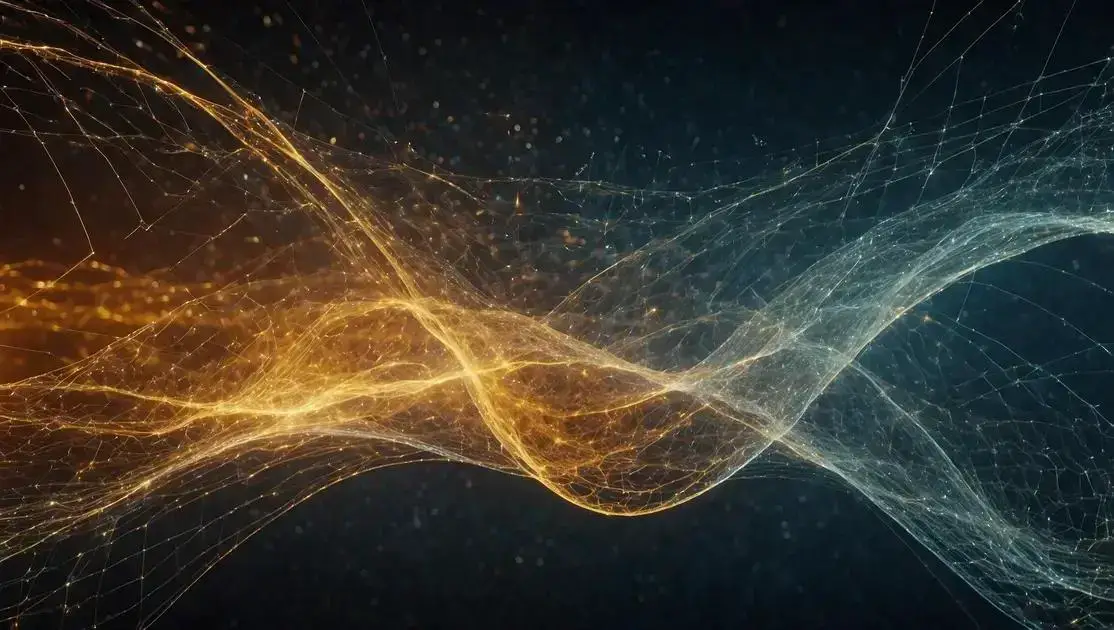Scientific breakthroughs are transforming our understanding of the universe and enhancing our daily lives in unprecedented ways. From medical advances to technological innovations, these discoveries not only push the boundaries of human knowledge but also inspire future generations to explore the unknown. In this article, we will delve into the key scientific breakthroughs that have shaped our world, the minds behind these developments, and the implications they hold for the future.
Table of Contents
ToggleThe Importance of Scientific Breakthroughs
The importance of scientific breakthroughs cannot be overstated. They are vital for progress in various fields, such as medicine, technology, and environmental science. These discoveries pave the way for innovative solutions that improve our quality of life and enhance our understanding of the universe.
Driving Human Progress
Scientific breakthroughs often lead to significant advancements in human health. For instance, the development of vaccines has saved millions of lives by preventing infectious diseases. Similarly, breakthroughs in genetic research are leading to personalized medicine, allowing for targeted treatments that were unimaginable a few decades ago.
Technological Advancements
In addition to health, breakthroughs drive technology forward. The advent of the internet and advancements in renewable energy sources stem from pivotal scientific discoveries. Each new technology reshapes society and creates new opportunities for economic growth and better living standards.
Understanding Our Environment
Scientific breakthroughs also enhance our understanding of the environment. Research on climate change has prompted global discussions about sustainability and conservation. Innovations in agricultural science are helping to produce food more efficiently, addressing hunger while protecting natural resources.
Cultural and Social Impact
Beyond tangible benefits, scientific breakthroughs shape cultural and social perspectives. They challenge our views about existence and our place in the universe. Discoveries in fields like astrophysics and psychology inspire people to think beyond traditional boundaries and engage in profound questioning about life itself.
In summary, the importance of scientific breakthroughs lies not only in the advancements they bring but also in the ripple effects they create across society, inspiring a quest for knowledge and understanding while significantly enhancing human life in numerous ways.
Key Scientific Breakthroughs in Recent History
Many key scientific breakthroughs have occurred in recent history, transforming various fields and impacting daily life. These discoveries often stem from innovative research conducted under challenging circumstances.
CRISPR Technology
A notable advancement is CRISPR-Cas9, a revolutionary gene-editing technology. This breakthrough allows scientists to alter DNA sequences with precision. Its potential applications include curing genetic disorders and enhancing agricultural yields.
Immunotherapy in Cancer Treatment
Another important breakthrough is the use of immunotherapy for cancer treatment. This method harnesses the body’s immune system to fight cancer more effectively, leading to improved survival rates and better quality of life for many patients.
Discovery of Gravitational Waves
The detection of gravitational waves in 2015 was a monumental milestone in physics. This discovery confirmed a key prediction of Einstein’s general theory of relativity and opened a new way of observing the universe.
Advancements in Renewable Energy
Recent innovations in renewable energy, particularly in solar and wind technologies, have made sustainable energy sources more efficient and cost-effective. These breakthroughs are essential for combating climate change and transitioning to a greener economy.
Artificial Intelligence and Machine Learning
Artificial intelligence (AI) has also seen dramatic advancements. Machine learning algorithms are now capable of processing vast amounts of data quickly, improving everything from healthcare diagnostics to personalized marketing.
These breakthroughs collectively shape the current landscape of science and technology, indicating a trend toward solving some of humanity’s most pressing challenges.
Impact of Scientific Breakthroughs on Technology
The impact of scientific breakthroughs on technology is profound and far-reaching. Each significant discovery reshapes our technological landscape, driving innovation and enhancing various aspects of life.
Enhancements in Communication
One major impact is in communication technologies. Technologies like the internet emerged from scientific advancements in electronics and materials science. Today, we can communicate instantly with anyone around the world, thanks to these breakthroughs.
Transformation of Healthcare
In healthcare, breakthroughs in biotechnology have revolutionized treatments and diagnostics. Innovations such as telemedicine and wearable health devices arise from a deeper understanding of biology and technology integration. These advancements make healthcare more accessible and efficient.
Automation and Industry
The industrial sector has also transformed due to scientific breakthroughs. Automation technologies, driven by robotics and AI, have enhanced manufacturing processes. This not only increases productivity but also ensures better safety and precision in operations.
Emergence of Smart Technologies
Furthermore, scientific innovations have led to the rise of smart technologies. Smart homes and IoT devices (Internet of Things) connect appliances and systems, allowing for improved energy management and convenience. These advancements are a direct result of scientific research in electronics and computer science.
Impact on Environmental Solutions
Scientific breakthroughs significantly influence environmental technologies as well. Innovations in renewable energy—like solar and wind power—have emerged from the desire to find sustainable solutions. These technologies help reduce our carbon footprint and dependence on fossil fuels.
Overall, the intertwining of scientific discoveries and technology drives continuous evolution, unlocking new capabilities and improving lives on a global scale.
How Scientific Breakthroughs Change Our Lives
Scientific breakthroughs have the power to change our lives in so many ways. They influence how we live, work, and interact with one another. Each discovery creates new possibilities, improving health, technology, and our understanding of the world.
Health and Medicine
In healthcare, scientific advancements lead to better treatment options. For example, the development of new medications based on a deeper understanding of diseases allows people to manage chronic illnesses more effectively. Breakthroughs in medical devices, like insulin pumps and heart monitors, improve patient care.
Daily Convenience
In our daily lives, scientific breakthroughs enhance convenience. Smart home technology allows us to control lighting, temperature, and security systems with a simple command. This not only makes life easier but also helps us save energy and reduce costs.
Education and Learning
Breakthroughs in technology influence education too. Online learning platforms provide access to quality education worldwide. This democratization of learning helps students and professionals gain knowledge and skills they may not have had access to otherwise.
Environmental Stewardship
Scientific discoveries encourage better environmental practices. Advances in renewable energy sources, such as solar and wind power, promote sustainability. By using these technologies, we can reduce our reliance on fossil fuels, benefiting both the planet and future generations.
Social Connections
Finally, breakthroughs in communication technology allow us to connect with people around the globe. Social media platforms, video calls, and messaging apps enable us to maintain relationships despite physical distances, fostering a sense of community.
Overall, scientific breakthroughs enhance almost every aspect of our lives, driving progress and improving our everyday experiences.
Major Players Behind Scientific Breakthroughs
Many major players contribute to scientific breakthroughs, driving research and development in various fields. These individuals and organizations play crucial roles in advancing knowledge and technology.
Research Institutions
Major research institutions, such as the Max Planck Society and MIT, are at the forefront of scientific discovery. They provide the necessary resources and support for scientists to explore new ideas and conduct experiments that can lead to groundbreaking results.
Universities
Universities around the world, including Harvard and Stanford, are vital contributors to scientific research. Faculty members often lead innovative projects and mentor the next generation of scientists, helping to cultivate a culture of inquiry and exploration.
Private Companies
Private companies also play a significant role in scientific breakthroughs. Tech companies like Google and Microsoft invest heavily in research and development. Their innovations in AI and machine learning push the boundaries of what technology can achieve.
Government Agencies
Government agencies such as NASA and the National Institutes of Health (NIH) contribute through funding and support. Projects funded by these agencies often lead to innovations that directly benefit society, such as advancements in healthcare and space exploration.
Notable Scientists
Prominent scientists like Marie Curie, Albert Einstein, and Jane Goodall have made lasting contributions through their research. Their work inspires future generations and leads to significant advancements in their respective fields.
In summary, the combined efforts of these major players foster an environment where scientific breakthroughs can flourish, impacting lives and furthering human knowledge.
Future Trends in Scientific Breakthroughs
Future trends in scientific breakthroughs shape how we approach problems in various fields. These trends are driven by technological advancements and a growing understanding of complex systems.
Integration of Artificial Intelligence
One significant trend is the integration of artificial intelligence (AI) in scientific research. AI can analyze vast amounts of data quickly, helping scientists identify patterns and make predictions. This capability will accelerate discoveries in medicine, materials science, and environmental studies.
Personalized Medicine
Another emerging trend is the move towards personalized medicine. Advances in genomics and data analytics enable treatments tailored to individual patients. This approach promises more effective therapies with fewer side effects.
Sustainability Focus
There is also a heightened focus on sustainability. Future scientific breakthroughs will likely include new methods for renewable energy generation, carbon capture, and waste minimization. This trend aligns with global efforts to combat climate change and promote environmental stewardship.
Collaboration Across Disciplines
Collaboration between disciplines will become increasingly important. Scientists are recognizing that complex problems, like pandemic response and climate change, require combined expertise. Interdisciplinary teams will drive innovative solutions that address these challenges.
Advancements in Space Exploration
Lastly, advancements in space exploration will fuel future scientific breakthroughs. Projects like Artemis aim to return humans to the Moon, while missions to Mars will push the boundaries of our knowledge about other planets and the potential for life beyond Earth.
These trends indicate an exciting future for scientific breakthroughs, promising significant impacts across society and the environment.
The Role of Collaboration in Scientific Research
The role of collaboration in scientific research is crucial for fostering innovation and achieving breakthroughs. Working together allows scientists to share resources, ideas, and knowledge, driving progress in ways that individual efforts may not.
Interdisciplinary Teams
Collaboration often involves interdisciplinary teams that bring together experts from various fields. This combination of different perspectives leads to creative solutions to complex problems. For example, a project tackling climate change may need input from climatologists, engineers, and policy experts.
Access to Resources
Collaborative research projects can provide access to shared resources that might be unavailable to single researchers. This includes labs, equipment, and funding. By pooling resources, teams can undertake larger, more ambitious projects.
Accelerated Learning
Working with others accelerates learning and knowledge transfer. Researchers can learn from one another’s experiences and mistakes, which enhances their expertise. This environment of shared knowledge fosters a culture of continuous improvement.
Global Partnerships
Global collaboration also plays a significant role in addressing worldwide challenges. International partnerships often tackle issues like pandemics and environmental crises. These collaborations leverage diverse skills and experiences from around the globe, ensuring a well-rounded approach to problem-solving.
Improved Innovation
Ultimately, collaboration enhances innovation. The combination of different ideas, disciplines, and cultures leads to breakthroughs that have the potential to change the world. By uniting efforts, scientists can push the boundaries of what is possible and find solutions that benefit society as a whole.
Challenges Faced in Achieving Scientific Breakthroughs
Achieving scientific breakthroughs is not without challenges. Researchers face numerous obstacles that can hinder progress and delay discoveries.
Funding Limitations
One major challenge is the lack of adequate funding. Many research projects require significant financial resources for equipment, materials, and personnel. When funding is limited, scientists may not be able to pursue ambitious projects that could lead to major breakthroughs.
Complexity of Research
The complexity of scientific research itself is another hurdle. Many problems are multifaceted and require advanced knowledge across different disciplines. This complexity can slow down the discovery process as researchers navigate various challenges and uncertainties.
Regulatory Hurdles
Regulatory issues also pose significant challenges. In fields like medicine and biotechnology, strict regulations must be followed to ensure safety and efficacy. While these regulations are essential, they can slow down the research process and limit the speed at which new discoveries are translated into practical applications.
Interdisciplinary Communication
Effective communication between diverse research teams can be difficult. Interdisciplinary collaboration is crucial for breakthroughs, but the different terminologies and approaches used by various fields can create misunderstandings. This lack of clear communication can hinder progress.
Public Perception and Support
Lastly, public perception and support for certain research areas can impact funding and research opportunities. Controversial topics may face opposition, making it harder to secure funding or government support. Gaining public trust and understanding is vital for advancing groundbreaking scientific endeavors.
These challenges illustrate that while the pursuit of scientific breakthroughs is essential, it requires overcoming significant hurdles to achieve meaningful results.
Case Studies of Notable Scientific Breakthroughs
Case studies of notable scientific breakthroughs highlight the impact of research and innovation in various fields. Each case illustrates how targeted efforts can lead to significant advancements.
Penicillin Discovery
One of the most famous breakthroughs is the discovery of penicillin by Alexander Fleming in 1928. This antibiotic revolutionized medicine, allowing for the treatment of bacterial infections that were once fatal. Its accidental discovery has saved millions of lives and paved the way for the development of other antibiotics.
DNA Structure Identification
Another major breakthrough is the identification of the structure of DNA by James Watson and Francis Crick in 1953. This discovery fundamentally changed biology, providing insight into genetics and heredity. Understanding DNA’s double helix structure helps scientists explore genetic disorders and develop new treatments.
Development of the Internet
The development of the Internet in the late 20th century marks a pivotal moment in communication and technology. Pioneers like Tim Berners-Lee and Vint Cerf contributed to creating protocols that allowed different networks to connect. This breakthrough transformed how we share information and interact globally.
CRISPR Gene Editing
In recent years, the CRISPR-Cas9 technology has emerged as a groundbreaking tool for gene editing. This innovation allows scientists to modify DNA with precision. It holds enormous potential for treating genetic diseases and enhancing agricultural practices, demonstrating how modern advancements can improve lives.
Vaccine Development for COVID-19
The rapid development of vaccines for COVID-19 is a recent example of scientific collaboration and innovation. Within a year of the virus’s discovery, multiple vaccines were developed and distributed worldwide, showcasing the power of modern science and global cooperation in responding to public health crises.
These case studies exemplify the transformative nature of scientific breakthroughs, illustrating how dedicated research can lead to solutions that improve health, technology, and our understanding of the world.
Public Perception of Scientific Breakthroughs
The public perception of scientific breakthroughs plays a crucial role in how these advancements are embraced and supported. People’s attitudes can shape funding, research priorities, and the implementation of new technologies.
Trust in Science
Trust in science influences public acceptance of breakthroughs. When people trust scientists and research institutions, they are more likely to support new discoveries and innovations. This trust can be built through transparent communication and successful past results.
Media Influence
The media significantly impacts public perception. News coverage can highlight the benefits of scientific breakthroughs or, conversely, focus on potential risks. Positive stories often create excitement and interest, while negative coverage can lead to skepticism and fear.
Understanding and Knowledge
Public understanding of science also affects perception. Individuals with a better grasp of scientific principles may be more likely to accept and support breakthroughs. Educational programs emphasizing science communication can help improve knowledge and dispel myths.
Fear of the Unknown
New technologies, especially in fields like genetic engineering and artificial intelligence, can provoke fear and resistance. Concerns about ethics, safety, and potential misuse can lead the public to question breakthroughs. Addressing these fears through thorough discussions and regulations is essential for acceptance.
Community Impact
How scientific breakthroughs affect local communities can also shape perception. If a breakthrough promises to improve lives—for instance, through better health care or renewable energy—communities are generally more supportive. Conversely, if the impacts are viewed as negative, such as job loss in traditional industries, resistance may occur.
Ultimately, public perception is dynamic, influenced by trust, education, media portrayal, and direct community impacts. Understanding these elements helps scientists and policymakers drive successful adoption of scientific advancements.
In Summary: The Impact of Scientific Breakthroughs
Scientific breakthroughs play a critical role in advancing knowledge, technology, and society. From the discovery of penicillin to advancements in CRISPR gene editing, these innovations have transformed healthcare, communication, and environmental practices.
Throughout our exploration, we have seen how scientific progress is driven by collaboration among researchers, institutions, and communities. However, challenges such as funding limitations and public perception pose significant hurdles that must be addressed to fully realize the potential of scientific discoveries.
As we look toward the future, fostering trust in science and enhancing public understanding will be essential for encouraging support and facilitating further breakthroughs. By overcoming these challenges, we can continue to unlock new possibilities that improve our lives and address global challenges.
Ultimately, the journey of scientific inquiry is ongoing, and the next great breakthrough could emerge from the dedication and innovation of today’s researchers.
FAQ – Frequently Asked Questions about Scientific Breakthroughs
What are scientific breakthroughs?
Scientific breakthroughs are significant discoveries or advancements that lead to new knowledge, technologies, or methods that impact various fields, including medicine, technology, and environmental science.
How do scientific breakthroughs affect our daily lives?
Scientific breakthroughs improve our everyday experiences by enhancing healthcare, technology, communication, and environmental practices, making life easier and safer.
Who are the major players behind scientific breakthroughs?
Major players include research institutions, universities, private companies, government agencies, and notable scientists who collaborate to drive innovation and discovery.
What challenges do researchers face in achieving breakthroughs?
Researchers encounter challenges like funding limitations, complex research demands, regulatory hurdles, and public skepticism, which can hinder progress and delay discoveries.
How is public perception important for scientific breakthroughs?
Public perception influences funding, support for research, and the acceptance of new technologies. Trust in science and effective communication can enhance public understanding.
What are some examples of notable scientific breakthroughs?
Examples include the discovery of penicillin, the identification of DNA structure, the development of the Internet, and advancements in CRISPR technology.











